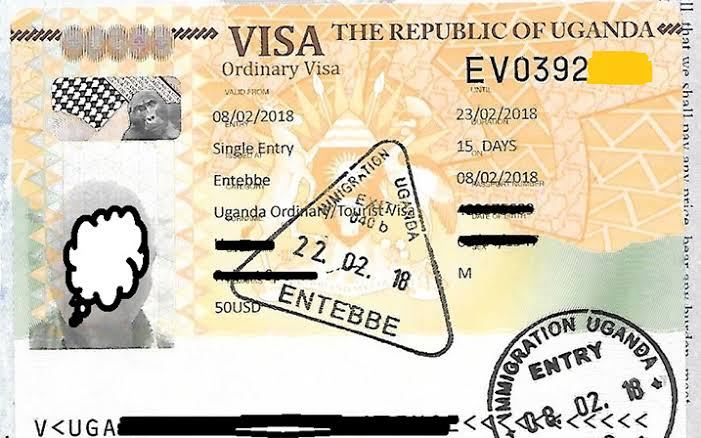- GET IN TOUCH WITH US:
- +256 753518160
- +256 777842166
- info@experiyatourcompany.com
Where to See Wildlife Near Kigali?
May 5, 2025Does Rwanda Have Beach Resorts?
May 5, 2025Why Visit Rwanda’s Cultural Villages?
Rwanda, often referred to as the “Land of a Thousand Hills,” is not just renowned for its scenic beauty and wildlife but also for its deep-rooted cultural heritage. The country is on the rise as a tourism destination, offering travelers the chance to explore not only its natural wonders but also its vibrant cultural history. One of the best ways to experience the heart of Rwanda’s culture is by visiting its cultural villages. These unique destinations provide visitors with the opportunity to immerse themselves in the traditions, arts, music, and lifestyles that have shaped this beautiful country for generations. Let’s explore why you should visit Rwanda’s cultural villages.
Discover Rwanda’s Rich Heritage
Rwanda’s history is incredibly diverse and fascinating. The country’s past is intertwined with a deep sense of tradition, artistry, and resilience. Cultural villages like the Iby’iwacu Cultural Village, the Nyundo Cultural Village, and the Gatagara Cultural Village, to name a few, serve as living museums that celebrate Rwanda’s traditions.
Visiting these villages is like taking a step back in time to experience the authentic Rwandan way of life. You’ll have the chance to see firsthand how traditional dwellings were constructed, learn about ancient customs, and experience the everyday life of the Rwandan people. From storytelling to dance, these villages provide an immersive, interactive experience that leaves you with a deeper understanding of Rwanda’s cultural richness.
Immerse Yourself in Traditional Dance and Music
One of the most exciting aspects of visiting Rwanda’s cultural villages is the chance to witness traditional music and dance performances. Rwanda is famous for its energetic and captivating dance forms, such as the Intore dance, a royal dance that showcases strength and precision. In the cultural villages, visitors can enjoy live performances that tell the stories of the people, their heritage, and their way of life.
Music is also an integral part of Rwandan culture, and you’ll be treated to the sounds of traditional instruments like the Inanga (a stringed instrument) and the Umuduri (a bow-shaped instrument). These performances are not just for entertainment; they are a way of keeping Rwandan traditions alive, and visitors are often invited to participate. Imagine dancing with the locals, drumming to the rhythm of the drums, and feeling the pulse of Rwanda’s rich cultural tapestry.
Experience Traditional Crafts and Arts
Rwanda’s cultural villages are not only about music and dance – they also showcase the impressive craftsmanship of the Rwandan people. In these villages, you can watch artisans at work, creating intricate beadwork, pottery, weaving, and basketry. Rwanda has a long tradition of craftsmanship, and many of the items produced are not just decorative but have practical uses in daily life.
If you’ve ever been fascinated by handmade crafts, you’ll be in awe of the skill and precision displayed by the artists. You’ll have the chance to learn about the cultural significance of each craft and perhaps even try your hand at making something yourself. Whether it’s weaving a basket or creating a piece of pottery, these hands-on experiences offer a personal connection to Rwanda’s heritage.
Engage with Local Communities
Rwanda’s cultural villages are not tourist traps but authentic, living communities that offer a unique opportunity to engage with the local people. When you visit these villages, you’re not just observing; you’re interacting with Rwandans who are proud of their culture and heritage. They’re eager to share their stories, traditions, and lifestyles with visitors, making for an enriching and educational experience.
Whether you’re learning how to cook a traditional meal, participating in a local ceremony, or simply chatting with the villagers, the interactions are meaningful. These experiences allow you to connect with Rwandans on a deeper level and gain insights into their lives that you wouldn’t get from a typical sightseeing tour. It’s about learning from the people themselves, gaining their trust, and understanding their culture in a genuine way.
Learn About Rwanda’s Traditional Cuisine
Rwandan food is an essential part of its culture, and a visit to the cultural villages gives you the chance to savor traditional dishes that have been passed down through generations. Local dishes like Isombe (cassava leaves with peanuts), Ugali (a maize-based dish), Ibihaza (pumpkin with beans), and Brochettes (grilled meat skewers) will tantalize your taste buds and offer a glimpse into the culinary history of the country.
Some villages even offer cooking classes where visitors can learn how to prepare these traditional dishes themselves. Whether you’re a food lover or someone who simply enjoys trying new things, exploring Rwandan cuisine is an experience that you won’t want to miss. You may even take home some new recipes to try with your friends and family.
Understand Rwanda’s Path to Unity and Reconciliation
Rwanda’s story is one of transformation and hope. While the country’s history has been marked by deep sorrow, with the 1994 genocide a tragic chapter, Rwanda’s journey of healing and unity is one of the most inspiring in the world. Many of the cultural villages play a key role in this journey of reconciliation, helping to rebuild communities and promote a shared sense of identity and pride.
By visiting these villages, you’ll learn more about the country’s efforts to foster unity among its people. Local leaders and elders often share stories of how Rwanda has moved forward, and these conversations can provide valuable insight into the country’s commitment to peace, forgiveness, and community healing. It’s an opportunity to gain a better understanding of the strength and resilience of the Rwandan people.
Eco-Tourism and Sustainable Practices
Rwanda is committed to sustainable tourism practices, and the cultural villages are a testament to this. Many of the villages emphasize eco-tourism by promoting environmental conservation, supporting local communities, and using sustainable resources in their day-to-day activities. Visiting these villages provides an opportunity to support sustainable tourism while learning about the importance of preserving Rwanda’s natural and cultural heritage for future generations.
Rwanda’s government and local communities work hand-in-hand to ensure that the growth of tourism benefits everyone. By visiting the cultural villages, you’re not only enriching your own travel experience but also contributing to the development of local communities and the preservation of cultural traditions.
A Journey for the Soul
Visiting Rwanda’s cultural villages is a soul-stirring journey that enriches your life in ways that few other travel experiences can. You come away not just with photographs and souvenirs but with a deeper appreciation of the people and their way of life. Whether it’s the vibrant dance performances, the intricate craftsmanship, or the stories shared by the locals, you’ll be touched by the warmth and hospitality of Rwanda’s cultural villages.
Conclusion: A Journey Worth Taking
In Rwanda, culture isn’t just a concept – it’s a living, breathing part of everyday life. Visiting the country’s cultural villages offers an authentic and immersive experience that lets you explore the very heart of Rwandan society. From witnessing traditional music and dance to engaging with local communities and tasting the delights of Rwandan cuisine, these villages offer a once-in-a-lifetime opportunity to connect with the soul of Rwanda.
So, whether you’re a history enthusiast, a nature lover, a food fanatic, or someone simply seeking to understand Rwanda’s rich cultural heritage, a trip to these cultural villages should be at the top of your list. It’s a journey that will leave you with memories that will last a lifetime and a greater appreciation for the diverse and vibrant culture of Rwanda.



